My childhood was an interesting one except for occasional sore throats. Ordinarily, these involve difficulty in swallowing and neck pain. However, there was one time my sore throat came with fever and an enlarged neck which the doctor said was a result of swollen lymph nodes. He informed my mom that the health condition was called tonsilitis, and after treating me, introduced my mom to the pressure point for tonsils.
Tonsilitis isn’t just a sore throat. It is an inflammation of the tonsils. These tonsils are in the back of the throat. They are two, on each side of the throat, and they act as defense mechanisms against bacteria and viruses that come in through the mouth. However, some bacteria and viruses subdue them, thus causing tonsilitis.
The symptoms of tonsilitis can be mild or extreme, ranging from sore throat and difficulty in swallowing to swollen lymph nodes, bad breath, and stomach pain. It is a common health condition that makes up about 1.3% of the outpatient visits in the United States, and children between the ages of 5 to 15 are more prone to having it than adults.
Normally, tonsilitis symptoms would take anywhere from 3 to 4 days to clear up. However, it can take a longer time, depending on the severity. The good news is that you can prevent or treat tonsilitis with ease without visiting your doctor. All you need are the pressure points for tonsils, which I’ll share with you in this article.
Where Should I Massage If I Have Tonsillitis?

Acupuncture and acupressure therapies, forms of Traditional Chinese Medicine (TCM) is effective in treating tonsilitis. Acupressure therapy involves stimulating or massaging pressure points along the meridians in the body that promotes the flow of energy in the body, aids blood circulation, and enhance general health and wellness.
Some pressure points along the large intestine meridian are responsible for relieving the symptoms of tonsilitis. However, a 2009 research disclosed that a single acupuncture treatment focusing on a selected area of the large intestine meridian is not effective enough in treating tonsilitis. This study, which involved the administration of real acupuncture and sham acupuncture on 60 patients, revealed a result for both groups that was almost the same.
Therefore, selected pressure points along the large intestine meridian are not enough for tonsilitis. In this article, I’ll show you three other pressure points that aren’t on the large intestine meridian that you can combine to effectively treat tonsillitis and other related issues.
Pressure Points For Tonsillitis
Acupoint: LI-17 (Other Names: Large Intestine-17/Tian Ding/Head’s Tripod)
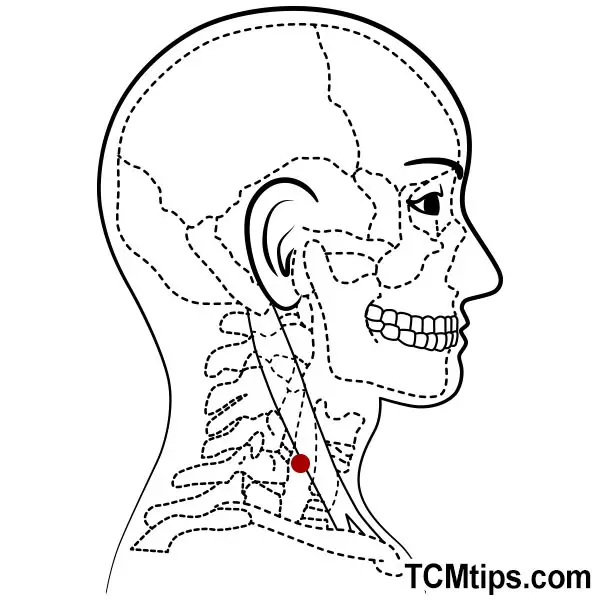
The first pressure point for tonsils is LI-17, otherwise known as Tianding in Chinese. This pressure point for tonsil infections is located on the neck. You’ll find Tianding at the side of the neck, on the edge of the neck muscle close to Adam’s apple, at the same height as the top of Adam’s apple.
LI-17, based on its location, packs a load of benefits for the throat and voice. Therefore, it is ideal for treating sore throat, goiter, and sudden loss of voice. However, when stimulating this acupoint, apply gentle pressure so as not to block the airways and cause yourself throat pain.
Acupoint: LI-4 (Other Names: Large Intestine-4/He Gu/Joining Valley)
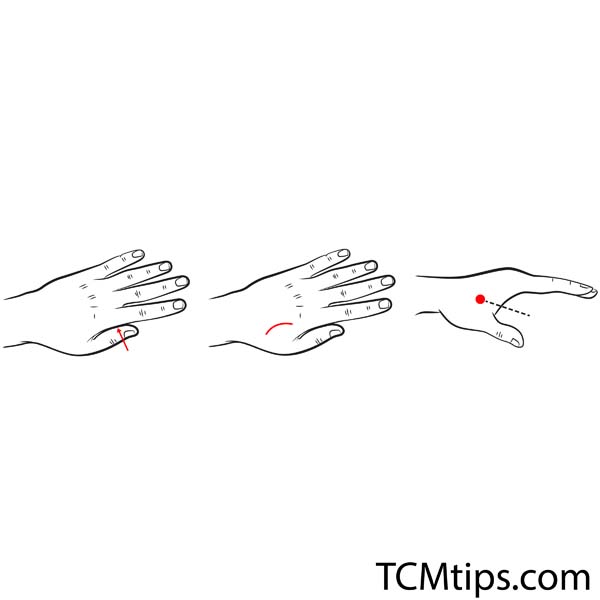
LI-4 is another of the pressure points to relieve tonsilitis. In Chinese, it is called Hegu, which means Joining Valley. Unlike the other large intestine meridian acupoint, LI-17, Hegu is located on the hand. You’ll find it in the depression between the base of your thumb and index finger when you spread them in a V-shape.
In TCM, LI-4 is a common pressure point. Although it is most effective in treating medical conditions related to the face and hand, it is used in treating all kinds of pains, whether mild or severe pain. Therefore, this acupoint is effective in treating sore throat, teeth and gum pain, and tinnitus.
LI-4 serves as acupressure for seborrheic dermatitis, and properly stimulating LI-4 also improves gastrointestinal tone.
Pressure Points For Immunodeficiency Disorders (Immune Support)
Tonsillitis caused by either bacterial infection or viral infection leads to a weakened immune system. Bacteria or viruses, when they attack the tonsils, weaken the palatine tonsils which serve as immunity to the body. Having weakened the palatine tonsils, they ease their way into the body to become antigens. Now in the body, they cause secondary diseases like stiff shoulder, abdominal pain, and loss of appetite that are a result of weakened immunity.
The next set of acupressure points for tonsils boosts immunity, improves blood flow, and helps your general physical condition.
Acupoint: KD-6 (Other Names: Kidney-6/Zhao Hai/Shining Sea)
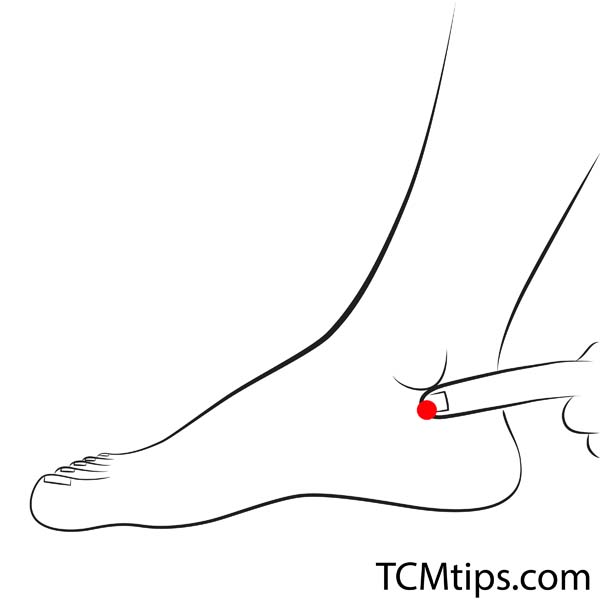
KD-6 or Zhaohai is a kidney meridian acupoint for tonsil infections. It is located on the foot. You’ll find it in the depression below the ankle bone, a thumb-with from the bottom of the ankle bone.
In TCM, KD-6 is the best kidney meridian acupoint for nourishing the kidney Yin. It is also responsible for clearing heat, calming the Shen, and improving the eyes and throat. Therefore, in addition to treating tonsilitis, KD-6 is also used clinically to treat eye disorders and constipation.
It also serves as one of the acupressure points for menstrual cramps.
Acupoint: LU-5 (Other Names: Lung-5/Chi Ze/Cubit Marsh)
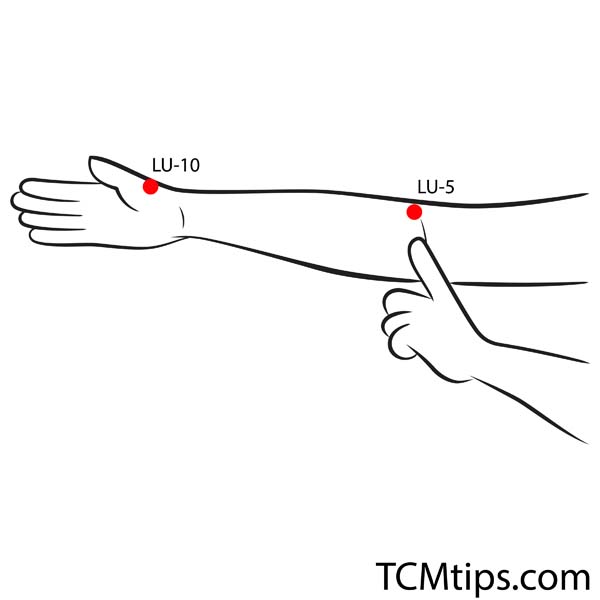
Another of the pressure points to relieve tonsilitis is LU-5 or Chize. This lung meridian acupoint is located in the hand. To locate LU-5, face your palm upwards, then bend and stretch your elbow. The point at the crease formed in your elbow that is in line with your thumb is LU-5.
Chize is responsible for clearing the heat in the lung, expelling lung phlegm, relaxing the sinews, and freeing water passages. It is for this reason that LU-5 is effective in treating abdominal pain, diarrhea, cough, asthma, and urine retention, in addition to tonsilitis. It is also one of the acupressure points for swollen glands.
Acupoint: GV-14 (Other Names: The Governing Vessel-14/Da Zhui/Great Vertebra)
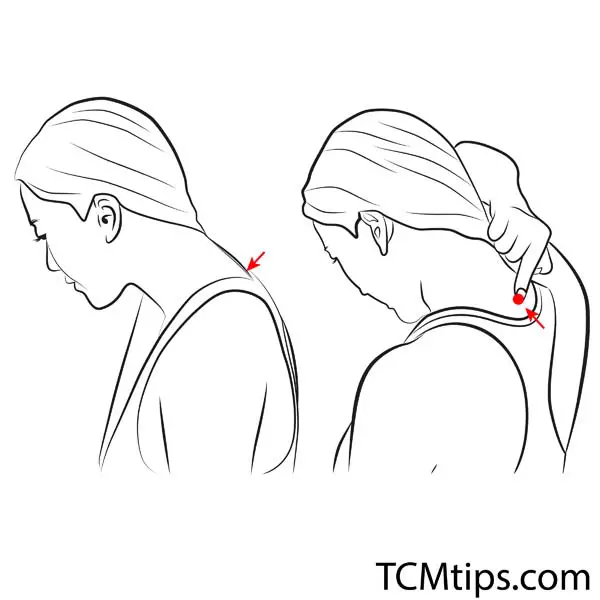
The last of the pressure points for swollen tonsils is GV-14. Governing Vessel 14 or Dazhui, as it is called in Chinese, is located in the neck. You’ll find GV-14 in the depression below the 7th cervical vertebra, which is the most prominent vertebra, hence the name great vertebra.
To locate this vertebra easily, bend your neck forward. The most prominent bone on the same level of the shoulders is the 7th cervical vertebra. Then the space between this bone and the next is GV-14.
This pressure point in the neck is used clinically to treat febrile diseases, common cold, swelling of the eyes, epilepsy, and cough. It is also used to treat malaria.

Try our Anti-Aging Gua Sha Tool designed to bring out your skin’s natural glow.
Best Gua Sha Product- Anti-Aging: The tool is designed to target 11 specific aging signs such as wrinkles and sagging skin. By following the 7-step routine, users can improve skin firmness and reduce fine lines naturally.
- Enhances Skincare Routine: It works effectively with serums and lotions, boosting absorption and efficacy of skincare products.
- Visible Skin Improvement: Users can expect a smoother complexion, reduced puffiness, and a more youthful appearance.
 P. Sze
P. Sze 
















